How To Build A Home Recording Studio: Part 5 – Accessories
This is part 5 in our How to Build a Home Recording Studio series that shows you how to set up a computer-based studio capable of recording pro-quality audio. In part 4, we talked about audio recording and editing software.
Today, let’s talk about the accessories – things like mic stands, headphones, pop filters, etc. These are the supporting actors in most cases – the things that make it easy for us to use the microphones, interfaces and software that make up the leading roles in our studio.
An argument could be made for monitor speakers being more of a lead actor, especially for music recording and mixing. But since we are starting out with more of an all-around basic studio that many of us will use only for voice-over type work, the speakers get second billing.
Microphone Stands
Since I’m recommending a large diaphragm condenser type mic, you’ll need a mic stand of some sort. For non-talking-head voice-over stuff, I highly recommend a scissor stand such as the Neewer Table Mounted Scissor Stand with pop filter AND shock mount. You can clip it to a table or desk, and rotate, push or pull the mic away as you need it.
I use one of these and find it incredibly handy, especially for voice-over work. The mic is always right there when I need it and I can just push it up and out of the way when I’m not using it. This one (Neewer) goes for about $21.
For music or voice-over use, another great and versatile choice is a boom stand like the On-Stage MS7701B Tripod Microphone Boom Stand. You can move these around and put them anywhere, and the boom functionality allows you to place the mic at any angle or height you want.
Shock Mounts
Large diaphragm condenser (LDC) mics are very sensitive to any bumps or vibrations coming through a mic stand. That is why it is almost mandatory to use a shock mount, which holds the mic suspended in a spider-web-looking thing made up of elastic bands.
Most LDCs have specific shock mounts designed for them by the mic manufacturer, and some even come with one, like the Audio-Technica AT2020 and AT2035 microphones. But you can also get a universal shock mount such as the Boseen universal shock mount that will work with pretty much any LDC you have.
Cables
If you’re using a non-USB mic and not using a desk boom stand (which come with the cable built in), you’ll need a mic cable, which usually cost about $25. These cables have the 3-pin XLR connectors. Of course if you are using a USB mic, you’ll use a USB cable. Be sure to use the one that came with the mic if you can, as these are designed for audio. Not all USB cables are up to that task.
Headphones
You can get away with using mp3-player-type ear buds if you need to, or if you’re going to stick to the headsets, that’s fine too.
But having headphones allows you to hear the audio much more clearly and are very useful if you do any Skype chats or other types of on-line meetings where you need listen as well as speak into your mic. Otherwise the speakers will also be picked up by the mic and cause feedback and other unpleasantness.
Of course, if you’re doing any multi-track recording (usually with music studios), headphones are necessary. I use both the Sennheiser HD 280 and the Audio-Technica ATH-M50 and recommend either or both.
Speakers
Again, if you already have speakers hooked up to your computer (most people do), you can get away with using those for now. When you can afford it though, you plan to mix and/or master music, a good upgrade would be to invest in a pair of monitor speakers such as the KRK Rokit G3 Active Monitors. The 6″ version will run about $200 per speaker.
Pop Filter
If you are recording your voice, you NEED a pop filter/screen to reduce the p-pops that are inevitable in human speech. Large diaphragm condenser mics are extremely sensitive to the little blasts of air that hit them when we say the letter “P” (or other plosive sounds).
The result in the recorded audio is little low-frequency splat type of sound. A pop filter set up between your lips and the mic will reduce or even eliminate p-pops. One good example is the Auray Pop Filter. They cost about $23.
MIDI Keyboard
This is really only helpful if you are planning on recording music. For folks just doing voiceovers or podcasts, you can skip this.
I’m mostly an acoustic instruments kind of guy. I play acoustic guitar and add bass and percussion all from “real” instruments. But I don’t have a full drum kit. I also don’t have a piano that sounds great for recording. So I use virtual instruments to build up a full song, especially for drums.
Having a MIDI keyboard to help with “playing” the virtual drums is – for me at least – a necessity. Same goes for piano parts and any other instruments I might want to add. For what a virtual instrument is, and how to use one, see my article – What is A Virtual Instrument? Play Music Without Having To Know How To Play Instruments.
Mixer
You don’t need one. Yeah, I know. The popular images of recording studios usually show big mixing boards with lots of impressive knobs and sliders. But for a computer based home recording studio, you do all your mixing in the computer.
Trying to route things through a mixer can really confuse things. Notice that neither of our home studio configurations include a mixer. The quality of mic preamps on a typical mixer are usually not good for recording.
One exception to what I’m saying about mixers in home studios is the MIDI control surface unit. These units are designed to give you physical control over your software mixer. Folks doing mainly voice-over work would probably not need one. Musicians who prefer using their hands to move sliders and knobs rather than a mouse are typically the ones who like to use control surfaces. One example is the Mackie Control Universal Pro – Expandable Control Surface.
That’s pretty much it for basic accessories! Let’s review the basic home recording studio set-up options configurations.
– Setup 1 (a mic plugged directly into a computer) – For pro quality audio you’ll need a USB mic on a stand with a pop filter plugged into a normal computer running, say, Reaper software. Total cost would be about $159.
– Setup 2 (XLR mic plugged into an interface plugged into a computer) – The basic pro-capable option would be a Large Diaphragm Condenser mic (non USB) on stand (I think full-sized boom stands are much more versatile than a simple desk stand) with a pop filter, plugged into an interface which is plugged into a normal computer running Reaper software. The total cost for that would be about $340.
Now What?
So now that you know how to put your studio together, you’ll want to know how to actually do the recording, right? That’s what Home Brew Audio is all about!
We’ve got tutorials, articles, tips and resources to help you on your recording journey. Also, we have a video tutorial series called The Newbies Guide To Audio Recording Awesomeness. The first module of the course takes you step-by-step, even if you’ve never done any recording before, through creating your first recordings and teaching you the basics of audio recording even if you have no budget for gear.
It uses the free Audacity software and a pc mic you probably already have (or you could buy for around $5). The second module of the course, The Newbies Guide To Audio Recording Awesomeness 2: Pro Recording With Reaper, shows you how to the same basics from part 1 when using Reaper software, plus introduce you to even more powerful and awesome recording tricks and techniques.
Now that you know how to put together an affordable but professional home recording studio, AND you have a place to learn how to use it, you can start recording awesome voice-overs, songs, video narrations, audio books, etc.
You can get free videos from both modules of the course by clicking on the button in the banner below.
Free videos from “The Newbies Guide to Audio Recording Awesomeness”


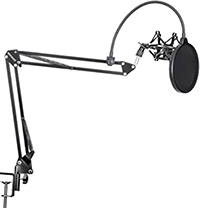
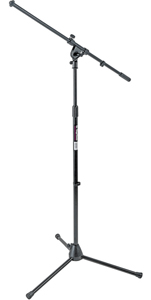
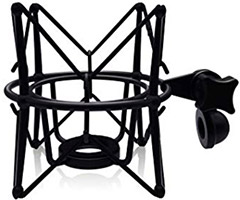
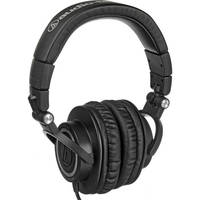
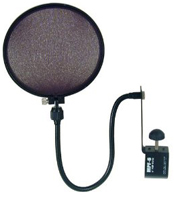
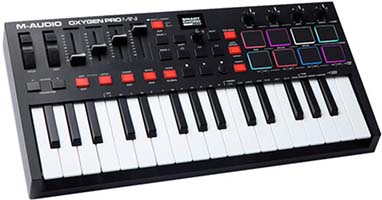
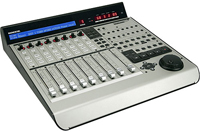
I purchased Part 1 of the Newbies Recording Course some time ago. Will part 2 be an add on or will it need to be purchased separately?
Great question Derek. Part 2 will be a full course unto itself using Reaper. So it will be a separate purchase. It should be out in 2 weeks. I’ll send a mailing out when it’s ready.
Cheers,
Ken
Will those of us who purchased your Audacity course get a discount on your new Reaper course?
Well I think that is a really good idea, Dan. I’m gonna say “yes.”:).
Garageband, if you have Mac OS: X Tiger. Tiger should come with Garageband, an easy to use aioticalppn to record and do other neat stuff with music, or you can use iMovie HD but that works better with a web cam
… [Trackback]…
[…] Read More here: homebrewaudio.com/how-to-build-a-home-recording-studio-part-5-accessories/ […]…